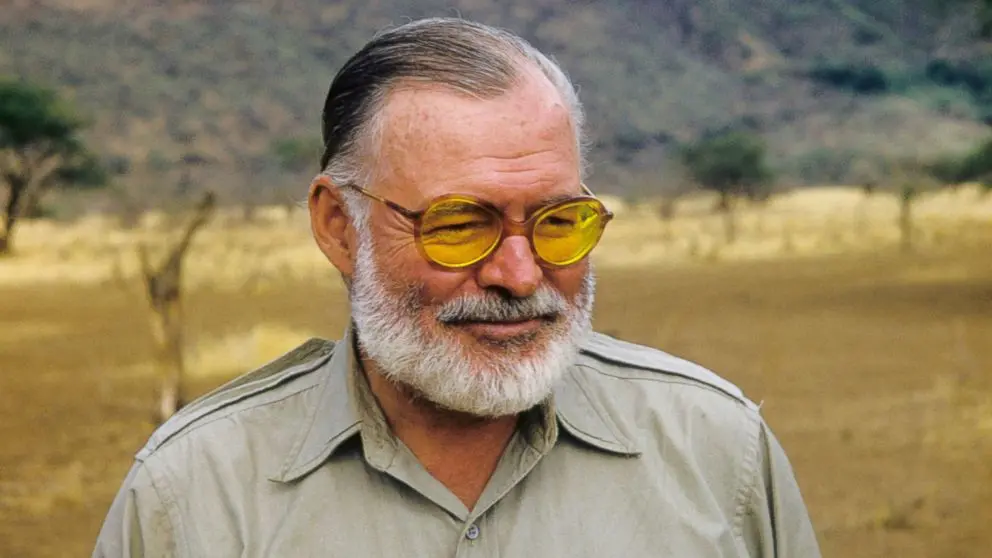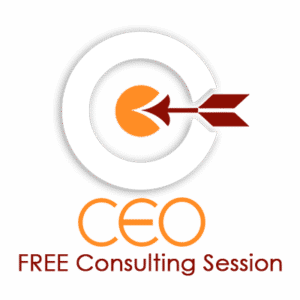Summary: Mental health is part of the business world for all leaders to consider at work. Pride Month offers a time to look at this complex topic through the life of Ernest Hemingway.

Dear Dr. Sylvia,
I am struggling with a senior VP who announced he is becoming a she. “They,” asked how that would impact their role at work.
I was more than surprised, actually shocked.
While the whole idea of being transgender, which is everywhere in today’s world, has been in the news, it never hit close to home till now.
Work is a place to continue to learn about ourselves and each other for ultimate success.
As a result, I want to support my employees, but I need help understanding this complex issue.
What solutions do you suggest for all employees to learn, grow, and become their best selves?
In other words, my biggest question is, “How can I help?”
Signed,
Being Better
Dear Being Better,
Indeed, the workplace is changing, and those at the leading edge are asking questions about creating the most collaborative and cohesive work environment, including mental health initiatives.
Firstly, I suggest you have a program or coach who helps individuals learn more about their behavior.
For example, what pushes their buttons and makes them willing to speak out or go silent?
Employee retention means considering the whole person, not just their financial contribution.
Today, I will tackle generational and gender issues and how they appear in life and work.
For instance, I recently read an excerpt from the book, The Broken Place by Russell Franklin,
It tells the story of Ernest Hemingway’s youngest child, Gregory (or Gloria), who lived from 1931–2001.
Like any good Hemingway hero, his biological son Gregory traveled the world, hunting and fishing.
Isn’t that what “real men” did to show their courage and strength?
Papa, as Hemingway was often called, is a side character in the book, though his mythos casts a long shadow.
In addition, he’s depicted telling his children how to be men. While the famous author is seen as temperamental, he’s often angry but occasionally gentle and kind.
What does it mean to be a man or a woman? And what about all the lives in between?
Decades ago, I developed a method to look at the generational aspects of present behavior.
It is called Sankofa Mapping, and details are in my book “Don’t Bring It To Work.”
Moreover, it shows how family, culture, and crises impact personal and professional relationships.
Whether you grew up in a home with a biological mother and father, divorced parents, single-parent home, same-sex parents, foster care, or were adopted, these roots are a significant part of each individual’s story.
As I moved from family therapy to leadership empowerment, I saw how the roots of each personal narrative must include memories and stories about birth and childhood environment.
Sankofa Mapping offers a way to put your story to choose your following path.
Thus, I created a map for you to follow.
Interestingly, in my book “Don’t Bring It To Work,” I researched Earnest Hemingway’s life to show how a Sankofa analysis could shed light on the underbelly of behavior.
As a favorite author, I wanted to understand more about how he came to be who he was. It also explained much about his siblings, children, and grandchildren.
Hemingway’s literary works indicate a pattern of asserting his masculinity in his writing and for the rest of his life.
Generational patterns show the power of looking at how life is connected, not isolated units.
To demonstrate, we begin by mapping out meaningful family relationships that defined the Hemingway family.
I’ve included entries for Hemingway’s father, mother, siblings, children, and grandchildren in the following Sankofa Map. The full details in my book are on pages 121-123.
Thus, the Sankofa Map becomes a marker of an individual’s place in the ebb and flow of human connections and turns them into “the legacy of a life once lived.”
We leave a legacy whether we give it any thought or not.
There were five suicides in the Hemingway family.
(Clarence, Ernest, Ursula, Leicester, and Margaux).
Various members suffered from depression, alcoholism, and drug dependency.
As a result, Hemingway killed himself like his father had — with a shotgun.
Going deep into your Sankofa Map will give you insights that can help you in the present time.
Hemingway’s father was strict, quick-tempered—a disciplinarian, as many men of that generation were.
His mother was domineering and religious.
Although Hemingway’s father was a doctor, he earned less than Hemingway’s mother did from the voice and music lessons she gave.
Hemingway’s father was seen as “less than” his more powerful mother.
Here is a clue to Hemingway’s determination to be a “macho man.”
He wanted to prove to the world that he was a strong, manly man to make up for his father’s weakness.
Here is another clue to his son Gregory transforming his gender.
Hemingway’s mother wanted twins and would dress Ernest and his sister Marceline in similar clothes and hairstyles. In one surviving picture, there is a nine-month-old. Ernest is wearing a pink dress and hat decorated with flowers, the caption beneath the photograph reading “summer girl.”
Hemingway verbalized his discontent with his parent’s behavior.
All in all, he once claimed that his “first big psychic wound was discovering his father was a coward,” and he once called his mother the “All-American Bitch.”
How we relate to our parents as children often appear in adult relationships.
Hemingway was married four times, each relationship ending when Hemingway joined up with his next wife through an affair.
Hemingway’s father taught him to love the outdoors, and Hemingway’s sons carried on this tradition.
Jack Hemingway became an avid conservationist, outdoorsman, and author; Patrick lived in East Africa for most of his adult life, running a safari firm and teaching game conservation for the United Nations.
Hemingway’s son Gregory was a physician like his grandfather and a writer like his father.
In short, he became a cross-dresser. Eventually, they had a sex change operation and took the name Gloria.
Hemingway’s granddaughter Margaux (Jack’s daughter) died by suicide through a drug overdose.
His grandchildren, who are authors, include Lorean, Patrick, John, Edward, and Mariel.
There is much more one could say about this colorful family.
Ultimately, by putting together what we have, we can see the power of emotion.
Patterns flow across generations and can be transformed into health and well-being if understood.
Suicide and alcoholism are comprehensible as family legacies.
It becomes clear that all families have unspoken ways for members to live out legacies and that a doomed gift hovered over the Hemingway clan.
Hemingway’s hypermasculinity seems possible, stemming from unarticulated doubts about his and his father’s masculinity, which originated in perceived power and the imbalance between Hemingway’s parents.
Similarly, it is startling to discover a parallel between Hemingway’s enforced childhood cross-dressing and his son’s chosen proclivity for that behavior.
Versions of Hemingway’s hypermasculinity also carried over in his sons Jack and Patrick’s love of the outdoors.
Finally, it is worth noting that certain members of Hemingway’s family have taken positive steps to break old family patterns.
When a Pattern Pioneer in the family says, “It will stop with me,” positive changes emerge.
His granddaughter Mariel, for instance, had bouts with eating disorders (another form of addiction akin to alcoholism), yet she is now a yoga practitioner and teacher of holistic living.
In addition, she has authored two books of her own: Finding My Balance: My Memoir and Healthy Living from the Inside Out.
Nonetheless, Allowing your family patterns to sink you is unnecessary, as Ernest Hemingway regrettably did.
Understanding the cause-and-effect relationships among traumas, conflicts, and life patterns, you will begin to comprehend and change many choices.
This understanding will, in turn, provide you with guidelines to make more appropriate decisions in the present.
The following exercise is designed to help you focus on crucial moments of conflict and tension you experienced in your immediate family while growing up.
Patterned behavior is more profound than a habit and takes time to uncover.
By noting how you and your relatives responded to family crises, you should understand how patterned behavior emerged in your family context and how family experiences continue to shape your workplace behavior today.
Beginning to chart your family behavior to see changes in all relationships.
Directions: On a piece of paper, create a chart with four columns and as many rows as your family members. Using the examples here as models, enter the information that describes your relationship and reactive pattern for each family member. Who aligns with whom?
And in opposition to whom?
Notice how you and other family members interact when confronted by the patterns of other family members. Then, filling in your chart, choose from the following list of behavior patterns:
Attacking/ Bribing/ Intimidating
Smothering/ Withdrawing/ Bullying
Blaming/ Protecting/ Humoring
Shaming/ Manipulating/ Slapping
Placating/ Avoiding/ Ignoring
Abusing /Demanding /Controlling
Babying /Threatening/ Rescuing
Sympathizing/ Gossiping/ Defending
Yes, you begin to see connections so you can make better decisions.
The word Sankofa means “Heal the past to free the present.”
In conclusion, Sankofa Mapping is a way to have the freedom to live your life fully.
I suggest you offer your employees the opportunity to explore both the options and the triggers that get in the way of success.
Yes, to find a place for Mental Health options at work.
And yes, to honoring and appreciating each other.
Here’s to your success,
Sylvia Lafair
PS. You have many choices to start your journey. You can start by reading “Invisible Stress (It’s NOT What YOU Think)” and doing the Stress Mastery online program. Read “GUTSY: How Woman Leaders Make Change,” and do the GUTSY Women Leaders online Program. For diversity, equity, and inclusion is my book “UNIQUE: How Story Sparks Diversity, Inclusions, and Engagement.” And, of course, read “Don’t Bring It To Work” and then do the Total Leadership Connections online program. All are award winners and will support your growth, health, and wellness.


